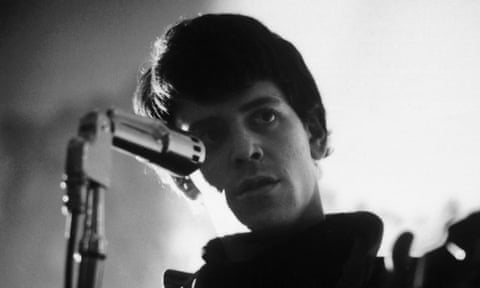30. Ride Into the Sun (1969)
The Velvets recorded two versions of Ride Into the Sun: a fabulous 1969 instrumental laden with fuzz guitar and a hushed 1970 vocal take backed by organ. Somewhere between the two lies one of their great lost songs; Lou Reed’s disappointingly flat 1972 solo version doesn’t do it justice at all.
29. Run Run Run (1967)
For all the shock engendered by the lyrics of Heroin and I’m Waiting for My Man, the most malevolent-sounding track on the debut album might be Run Run Run, a powerful R&B groove lent a gripping darkness by Reed’s noisy guitar playing and the screw-you-I-take-drugs sneer of his vocals.
28. Beginning to See the Light (1969)
The title suggests awakening, the melody is bright, but the lyrics are dark and bitter. They may have been directed at John Cale, who played on an initial version of the song, which was subsequently re-recorded after Reed sacked him, against the wishes of his bandmates. A ferocious 1969 live version amps up the tension.
27. Foggy Notion (1969)
Reed was a lifelong doo-wop fan. His passion usually found its expression when the Velvet Underground recorded backing vocals for their ballads – as on Candy Says – but the tough, rocking Foggy Notion went a stage further, gleefully stealing a chunk of the Solitaires’ 1955 single Later for You Baby.
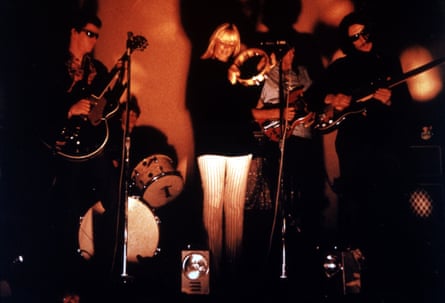
26. The Gift (1968)
In which the band set a two-chord grind that may, or may not, have been based on their instrumental Booker T in one channel and a blackly comic Reed short story read by Cale in the other. “If you’re a mad fiend like we are, you’ll listen to them both together,” offered the producer, Tom Wilson.
25. Guess I’m Falling in Love (1967)
Recorded at the White Light/White Heat sessions, but never completed, the April 1967 live recording of Guess I’m Falling in Love – taped at the Gymnasium in New York – will more than suffice. It boasts three chords, a distinct rhythm and blues influence, Reed in streetwise, so-what punk mode and explosive guitar solos somehow potentiated by the rough sound quality.
24. Temptation Inside Your Heart (1968)
“It was not Mein Kampf – my struggle,” the guitarist Sterling Morrison once reflected of the Velvet Underground’s career. “It was fun.” A delightful late Cale-era outtake that inadvertently captured Morrison, Cale and Reed’s giggly backchat as they recorded the backing vocals, Temptation Inside Your Heart bears that assessment out.
23. New Age (1970)
New Age comes in two varieties. Take your pick from the world-weary, small-hours rumination found on 1969: The Velvet Underground Live, or the more epic studio version that the Velvets biographer Victor Bockris suggested was “an attempt to present some encouraging statements to a confused audience as the 70s began”. Both are superb.

22. After Hours (1969)
The Velvets’ eponymous 1969 album ends, improbably, with the drummer, Moe Tucker, singing a song that could have dated from the pre-rock era. The twist is that her childlike voice and the cute melody conceals an almost unbearably sad song, ostensibly a celebration of small-hours boozing, but filled with longing and regret.
21. I Can’t Stand It (1969)
Amid the Velvets’ songs about drugs and drag queens lurked the plaintive sound of Reed pining for his college sweetheart, Shelley Albin, the subject of Pale Blue Eyes, I Found a Reason and I Can’t Stand It. The latter’s cocky strut is disrupted by a desperate lyrical plea: “If Shelley would just come back, it’d be all right.”
20. The Black Angel’s Death Song (1967)
There is something folky and vaguely Dylan-esque at the heart of The Black Angel’s Death Song, but by the time Cale had finished with it – alternately strafing it with screeching, insistent viola and hissing into the microphone in lieu of a chorus – it sounded, and still sounds, unique.
19. I Found a Reason (1970)
It is one of the ironies of the Velvet Underground that the most forward-thinking, groundbreaking band of their era could occasionally sound like old-fashioned rock’n’roll revivalists. Buried on side two of Loaded was one of the loveliest of Lou Reed’s loving homages to doo-wop, complete with spoken-word section.
18. Some Kinda Love (1969)
Musically straightforward, sensual in tone, Some Kinda Love is a complex business, part seduction soundtrack, part refusal to be hemmed in by standard categories of sexuality – “no kinds of love are better than others … the possibilities are endless / and for me to miss one / would seem to be groundless”. Killer line: “Between thought and expression lies a lifetime.”
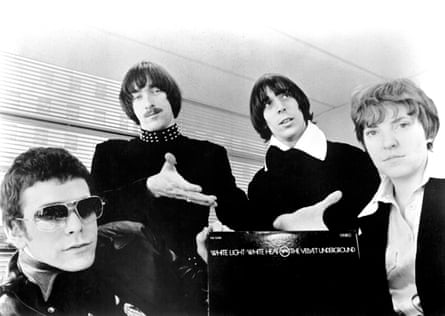
17. European Son (1967)
European Son isn’t a song so much as an eruption. It sounds like a band overturning the established order of rock’n’roll, almost literally: after two brief verses, it bursts into thrilling frantic chaos with a verbatim crash, like the contents of an upended table hitting the floor.
16. Rock & Roll (1970)
It is hard to see Loaded’s driving, joyous hymn to music’s redemptive power – “her life was saved by rock and roll” – as anything other than disguised autobiography on the part of Reed. The suggestion that music will endure “despite all the amputations”, meanwhile, seems to look forward to his departure from the Velvet Underground.
15. Candy Says (1969)
No one else in 1969 was writing songs remotely like Candy Says, a stunning, tender pen portrait of the transgender Warhol superstar Candy Darling set to a gentle doo-wop inspired backing. Its melancholy seems to presage the note Darling wrote on her deathbed in 1974: “I had no desire for life left … I am just so bored by everything.”
14. Sunday Morning (1967)
Sunday Morning was written at the behest of Wilson. He wanted a single that might conceivably get on the radio; he got a haunting, melancholy sigh of a song, its battered wistfulness and undercurrent of paranoia – “watch out, the world’s behind you” – the perfect encapsulation of morning-after regret.
13. What Goes On (1969)
Morrison maintained that the studio incarnation of What Goes On wasn’t a patch on the live versions the band performed with Cale on organ. Maybe, but the studio incarnation featuring Cale’s replacement, Doug Yule, is great. It prickles with nervous energy, Reed’s guitar playing is amazing, its churning coda takes up half the song and it still feels too short.
12. Femme Fatale (1967)
Apparently provoked by the damaged, doomed Warhol superstar Edie Sedgwick – with whom Cale had a brief affair – Femme Fatale is as beautiful and fragile as its inspiration. The story of a wary, ruined former suitor warning others off the titular anti-heroine is lent a chilly edge by Nico’s delivery.

11. I Heard Her Call My Name (1968)
In the Velvets’ early days, Reed purported to be “the fastest guitarist alive”. A berserk claim, but his Ornette Coleman-inspired solos on I Heard Her Call My Name are some of the most extraordinary and viscerally exciting in rock history, frequently atonal, spiked with ear-splitting feedback and pregnant pauses.
10. Ocean (1969)
The Velvet Underground recorded Ocean several times – one version is supposed to feature the return of Cale on organ – but never released it in their lifetime, which seems extraordinary. It is among the greatest of their later songs, its atmosphere beautiful, the epic ebb and flow of its sound completely immersive.
9. I’m Waiting for the Man (1967)
An unvarnished lyrical depiction of scoring drugs tied to music on which Reed’s rock’n’roll smarts and Cale’s background in minimalist classical music – the pounding, one-chord piano part – meld in a kind of relentless perfection. Amusingly, there is now a pharmacy at the song’s fabled location of Lexington 125.
8. I’ll Be Your Mirror (1967)
A song about Reed’s affair with Nico that could just as easily be about Andy Warhol’s approach to art, I’ll Be Your Mirror is one of those Velvet Underground tracks that makes their initial commercial failure seem baffling. How could a pop song as wonderful as this fail to attract attention?
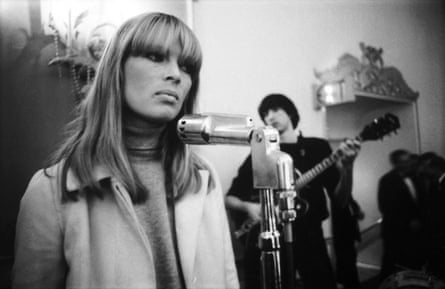
7. White Light/White Heat (1968)
A delirious paean to amphetamine, its subject reflected in the lyrics – “I surely do love to watch that stuff tip itself in” – and the turbulent, distorted rush of its sound. The band appear to be barely in control as it careers along; the chaotic finale, where Cale finally loses his grip on the bass line, is just fantastic.
6. Heroin (1967)
Heroin was the deal-breaker at early Velvets gigs, provoking a “howl of bewilderment and outrage”. The shock of its subject matter has dulled with time, but its surges from folky lament to sonic riot still sound breathtaking. Oddly sweet moment: Reed’s chuckle as Tucker loses her place amid the maelstrom and suddenly stops playing.
5. Pale Blue Eyes (1969)
“High energy does not necessarily mean fast,” Reed once argued. “High energy has to do with heart.” Hushed, limpidly beautiful and almost unbearably sad, Pale Blue Eyes’ depiction of a strained, adulterous relationship proves his point. In its own vulnerable way, it is as powerful as anything the Velvet Underground recorded.
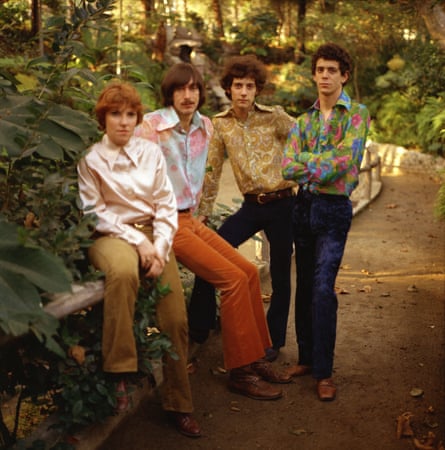
4. Sweet Jane (1970)
Sweet Jane started life as a ballad – see the versions recorded live at the Matrix in San Francisco in 1969 – but, sped and toughened up, it became as succinct and perfect a rock’n’roll song as has ever been written, based around one of the greatest riffs of all time.
3. Venus in Furs (1967)
For a band who inspired so much other music, the Velvet Underground’s catalogue is remarkably rich with songs that still sound like nothing else; they were as inimitable as they were influential. Venus in Furs is a case in point: umpteen artists were galvanised by its dark, austere atmosphere; none succeeded in replicating it.
2. Sister Ray (1968)
A monumental journey into hitherto-uncharted musical territory, where a primitive garage-rock riff meets Hubert Selby-inspired lyrics and improvisation that sounds like a psychological drama playing out between Reed and Cale, all at skull-splitting volume. Fifty-three years later, it is without peer for white-knuckle intensity.
1. All Tomorrow’s Parties (1967)
Ninety per cent of the Velvet Underground’s oeuvre consists of no-further-questions classics. The astonishingly high standard of almost everything they did makes picking their “best” song a matter of personal preference, rather than qualitative judgment. So let’s go for Warhol’s favourite, on which the sour and sweet aspects of their debut album entwine faultlessly. The melody is exquisite; the music monolithic and unrelenting, powered by Cale’s hammering piano and Tucker’s stately drums; Nico’s performance perfectly inhabits the lyrics, which turn a depiction of a woman choosing what dress to wear into a meditation on emptiness and regret. It is original and utterly masterly: the Velvet Underground in a nutshell.
